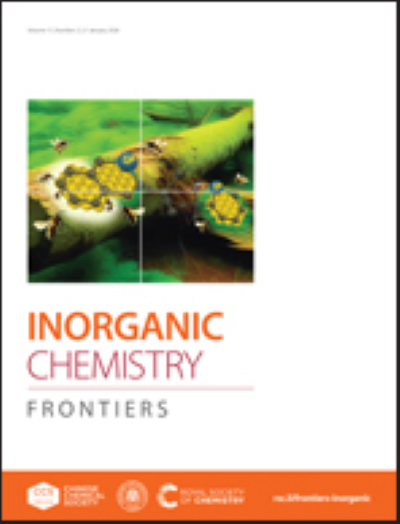Structural engineering of MXene frameworks with abundant surface functionalities for enhanced lithium–sulfur battery electrochemistry
IF 6.1
1区 化学
Q1 CHEMISTRY, INORGANIC & NUCLEAR
引用次数: 0
Abstract
Two-dimensional MXene materials have garnered significant attention in lithium–sulfur battery (LSBs) research due to their inherent high electrical conductivity and exceptional catalytic activity, which help mitigate the intrinsic challenges of sluggish redox kinetics and polysulfide shuttling. However, systematic investigations into the correlation between the structural evolution of MXene-based electrodes and their electrochemical performance remain underdeveloped. In this study, Ti3C2Tx and Ti2CTx are fabricated via a top-down method, and their performance differences in LSBs are compared. Due to its unique three-layer titanium atomic structure and rich surface functional groups (–OH, –O, –F, etc.), Ti3C2Tx exhibits excellent conductivity and chemical stability. Electrochemical testing and in situ ultraviolet–visible spectroscopy analysis show that Ti3C2Tx effectively suppresses the polysulfide shuttle effect and accelerates the redox conversion of sulfur species. The cell using Ti3C2Tx as a separator exhibits a capacity decay rate of 0.085% at 2 C after 200 cycles, and it maintains stable cycling at 60 °C, in contrast to Ti2CTx, which fails after 50 cycles. This study highlights how structural differences in MXene materials influence the electrochemical behavior of LSBs, providing new insights and establishing a foundation for their application in high-performance LSBs.

具有丰富表面功能的MXene框架的结构工程用于增强锂硫电池的电化学性能
二维MXene材料由于其固有的高导电性和优异的催化活性,在锂硫电池(LSBs)的研究中引起了极大的关注,这有助于缓解氧化还原动力学缓慢和多硫化物穿梭的内在挑战。然而,对于mxene基电极的结构演变与电化学性能之间的关系,目前还没有系统的研究。本研究采用自顶向下的方法制备了Ti3C2Tx和Ti2CTx,并比较了它们在lsdb中的性能差异。由于其独特的三层钛原子结构和丰富的表面官能团(-OH、-O、-F等),Ti3C2Tx具有优异的导电性和化学稳定性。电化学测试和原位紫外可见光谱分析表明,Ti3C2Tx有效抑制了多硫化物的穿梭效应,加速了硫种的氧化还原转化。使用Ti3C2Tx作为隔板的电池在200次循环后,在2℃下的容量衰减率为0.085%,在60℃下保持稳定循环,而Ti2CTx在50次循环后失效。本研究突出了MXene材料的结构差异如何影响lbs的电化学行为,为其在高性能lbs中的应用提供了新的见解,并奠定了基础。
本文章由计算机程序翻译,如有差异,请以英文原文为准。
求助全文
约1分钟内获得全文
求助全文
来源期刊

Inorganic Chemistry Frontiers
CHEMISTRY, INORGANIC & NUCLEAR-
CiteScore
10.40
自引率
7.10%
发文量
587
审稿时长
1.2 months
期刊介绍:
The international, high quality journal for interdisciplinary research between inorganic chemistry and related subjects
 求助内容:
求助内容: 应助结果提醒方式:
应助结果提醒方式:


